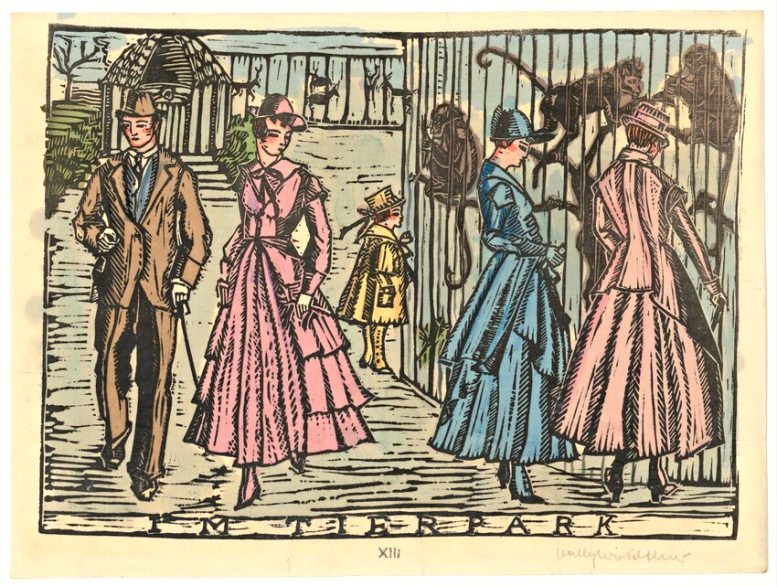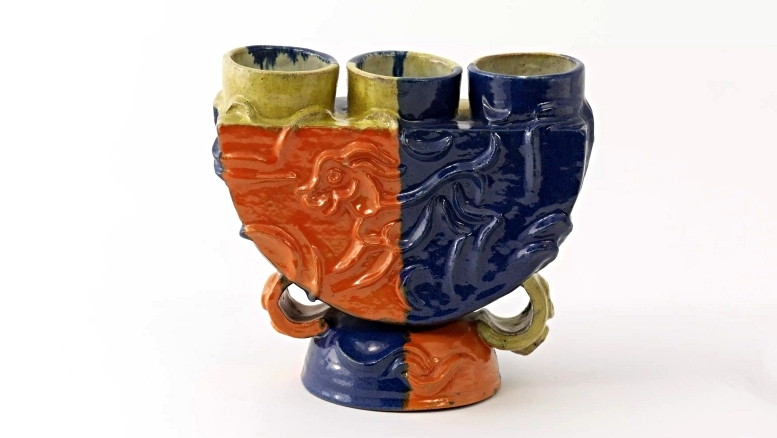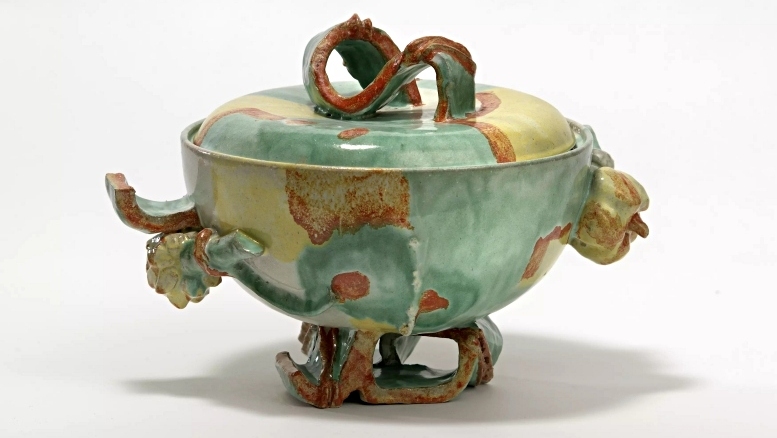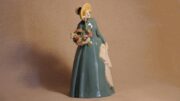„Vally Wieselthier, Viennese, student of Professor Hoffmann, began her career in the Wiener Werkstätte and already has a worldwide reputation. Her artistic speciality is ceramics. Here she has created something extraordinary. Like all talented women who emerged from the Wiener Werkstätte, she learnt from the ground up, so to speak,“ wrote the magazine „Die Bühne“ in 1929 in a report on a New York artists‘ festival for which Wieselthier had designed the decorations.[1]
Born in Vienna on 25 May 1895, the artist undoubtedly had great international success as a ceramicist, but her artistic ambitions went far beyond that. The 544 items in the collection of works by Vally Wieselthier in the „Museum of Applied Arts“ in Vienna show that, in addition to fabric and glass designs, she also had a penchant for commercial art. This includes designs for invitation cards, adverts and posters.
Vally Wieselthier studied at the “ Kunstschule für Frauen und Mädchen (Art School for Women and Girls)“ in Vienna from 1912 to 1914 and then the “ Kunstgewerbeschule (School of Arts and Crafts)“ until 1920, where her teachers were Rosalia Rothansl, Kolo Moser, Josef Hoffmann and Michael Powolny, among others. While still a student, she began working for the „Wiener Werkstätte“, for which she initially took on textile designs, such as fabric and fashion designs. During this time, she also contributed graphic works to the portfolios „Die Mode 1914/5“ and „Das Leben einer Dame“ (1916). Soon, however, ceramic works would take centre stage in her work.[2]

Das Leben einer Dame (The life of a lady): 1/XIII, 1916. Albertina Wien
From 1917 to 1922, she worked in the ceramics department of the „Wiener Werkstätte“. As a self-confident artist, however, she left the „Wiener Werkstätte“ due to differences of opinion regarding the financial management and founded her own studio. She worked successfully for renowned manufacturers such as „Augarten“ and „Josef Böck“ as well as for „Gmundner Keramik“ and other companies.
In 1925, Vally Wieselthier took part in the style-defining „Exposition internationale des arts décoratifs et industriels modernes“ in Paris. Impressed by the French art scene, she rented a studio in the French capital and worked there part of the time. In 1927, she sold her Viennese studio, including the rights to all her designs, to the „Wiener Werkstätte“, with whom she now had closer contact again and whose ceramics workshop she managed until 1929. During these years, she also worked on the graphic design of the „Wiener Werkstätte“.

Vase, 1927/1928, Wiener Werkstätte. Wien Museum (photo: Birgit und Peter Kainz). CC BY 4.0
The joint work that Wieselthier produced together with her colleague Gudrun Baudisch for the relief cover of the 25th anniversary book of the „Wiener Werkstätte“ represents a combination of her sculptural talent and her graphic skills. It is interesting to note that Wieselthier also used the basic idea for this cover in ceramic works.
Following her successes in France, Vally Wieselthier established contacts in the USA and took part in the „International Exhibition of Ceramic Art“ at the Metropolitan Museum in New York in 1928. She initially travelled between the continents until she stayed permanently in the USA from 1932, „where she played a leading role in the development of modern American ceramic art“.[3]
The art historian Else Hofmann wrote in the magazine „Österreichische Kunst“ in 1932: „A whole circle of women artists, who received special inspiration through the artistic training at the Wiener Werkstätte and also returned it to the Werkstätte, is formed around the strongest and most original ceramicist, Vally Wieselthier, who created fireplaces and stoves, lively figures, small sculptures for years in Vienna and Paris and is now conquering the New World with her creative games in America as part of the artists‘ association ‚Contempora‘.“[4]
Vally Wieselthier died in New York on 1 September 1945.
[1] Scapin: Vally Wieselthier und Paul Poiret, in: Die Bühne, 17.1.1929, p. 16.
[2] Brandow-Faller, Megan: Feminine vessels: Espressionist ceramics of the Wiener Werkstätte, in: Thun-Hohenstein, Christoph – Anne-Katrin Rossberg – Elisabeth Schmuttermeier (Ed.): Women artists of the Wiener Werkstätte, Basel 2020, p. 157ff.
[3] Fellner, Sabine – Andrea Winklbauer: Die bessere Hälfte. Jüdische Künstlerinnen aus Wien 1860–1938 – Eine Wiederentdeckung, in: Winklbauer, Andrea – Sabine Fellner (Hrsg.): The Better Half – Jewish Women Artists Before 1938, Wien 2016, p. 22.
[4] Hofmann, Else: Österreichisches Kunsthandwerk II: Keramik, in: Österreichische Kunst, 15.1.1932, p. 21.




